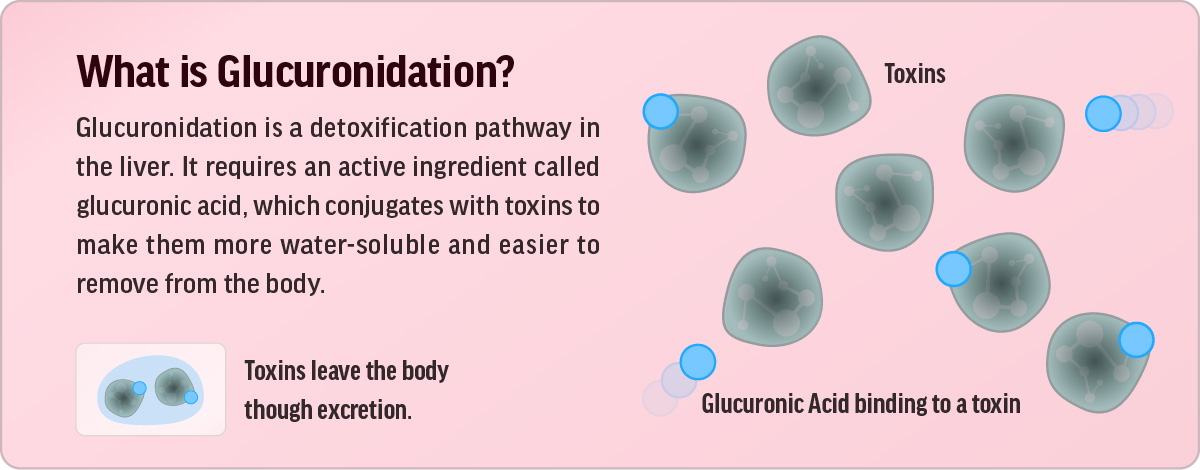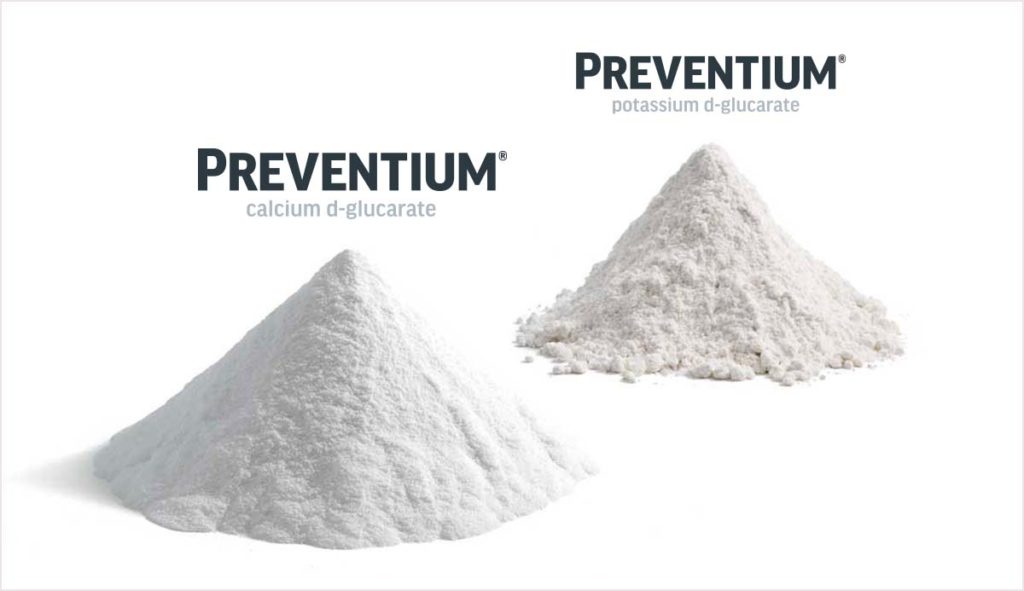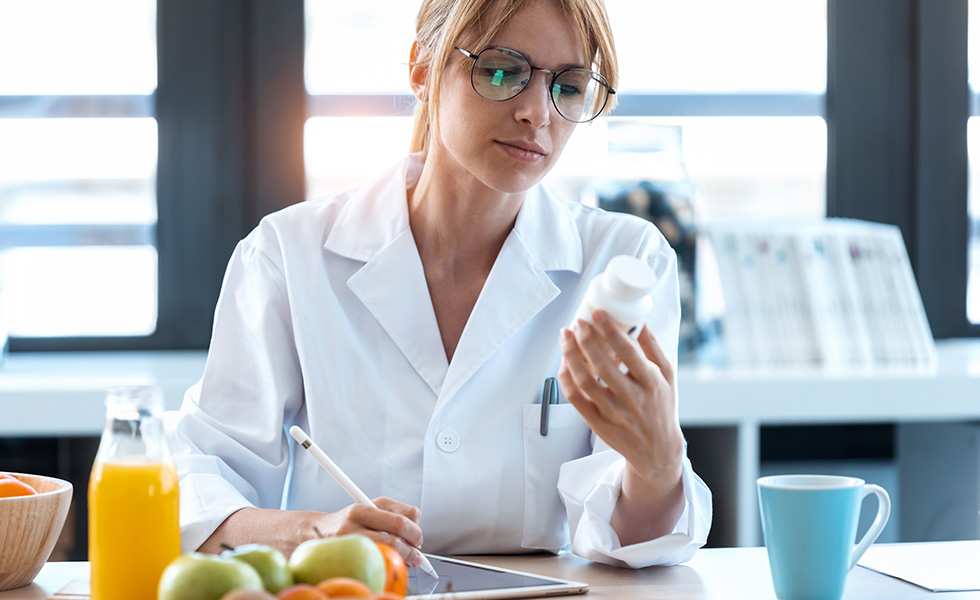Maintaining our immune health is crucial for the prevention of illness. While people are familiar with “boosting the immune system” by taking vitamins to fend off cold & flu, it is equally important to defend the body against harmful toxins, chemicals, and other pollutants that can cause an immune response.
Every day we are exposed to a myriad of microplastics, excess hormones, preservatives, pesticides, and other toxic compounds, which are health concerns. Fortunately, our bodies are well equipped to protect us from these harmful substances, thanks to the liver and other vital organs that play a pivotal role in this process.
As an industry, it’s time to approach immune support from a different angle by developing supplements that can also fortify our bodies against the harmful effects of toxins. An essential ingredient to incorporate is Glucarate, which has undergone extensive research in its ability to enhance the body’s natural detoxification pathways, leading to a more robust immune response.
Key Takeaways
- This article discusses the importance of defending our bodies against harmful toxins, chemicals, and pollutants that can cause an immune response.
- Glucuronidation is the liver’s primary detoxification pathway, where toxicants are made more water-soluble for easier elimination from the body.
- Unfortunately, disruptions in the detoxification process can occur due to a compound called β-glucuronidase which can reverse glucuronidation, recycling toxins back into the bloodstream.
- Supplementing with glucarate, a natural compound found in many fruits and vegetables, can fortify our glucuronidation pathway by preventing the disruption of β-glucuronidase.
- In conclusion, manufacturers should consider adding glucarate to their immune health products to create a more complete picture of prevention and defend against a broader range of harmful substances.
Key Terms:
PFAS: Per- and polyfluoroalkyl substances known as “forever chemicals” that have been recently designated by the EPA as “hazardous substances.”
BPA: Bisphenol A chemicals are used in plastic manufacturing and can contribute to many health problems including hormone disruption.
Microplastics: Tiny plastic particles defined as 5 millimeters or less which are problematic for the environment and personal health.
Glucuronidation (‘glu-curonida-tion’): A cellular detox pathway responsible for metabolizing toxicants so they can be excreted from the body.
Glucuronic acid: The key active used in glucuronidation to conjugate (or bind) with toxins to render them more water-soluble for easier removal from the body.
β-glucuronidase: An enzyme which can reverse the glucuronidation process by splitting the conjugation of toxins and glucuronic acid.
D-glucaro-1,4-lactone: A potent β-glucuronidase inhibitor
Glucarate (Preventium®): A supplemental ingredient that is metabolized into D-glucaro-1,4-lactone
Toxin Exposure in the Modern World
Regardless of lifestyle, diet, or environment, our bodies take in some variation of toxins every day. While the liver is an exceptional filtration system that works hard to convert many of these toxic compounds into waste, the present rate of exposure and accumulation of dangerous environmental toxins is becoming a topic of concern. Some environmental toxins to be aware of include excess hormones, preservatives and byproducts in processed foods, and “forever chemicals” like microplastics, BPA, and PFAS.
Our liver plays a large part in maintaining hormone balance by eliminating excess estrogen levels. Unfortunately, the accumulation of estrogen in the bloodstream goes well beyond our body’s limited natural production. Environmental estrogens are in certain foods, and high estrogen concentrations are present in some commercial meat products due to the residual hormones added to feed (Handa, 2010). Additionally, estrogen mimickers found in synthetic chemicals like pesticides, plastics, and detergents can add to the problem, overwhelming our liver’s capacity to balance hormones effectively.
Microplastics, BPA, and PFAS are often called “forever chemicals” that are extremely persistent, bioaccumulative, and toxic (HBM4EU, 2021). Despite recent regulations to limit their usage, considerable quantities of these compounds currently exist and, unfortunately, could remain in our environment for centuries. Scientists have detected microplastics in almost every place on earth, including deep oceans, Arctic snow, Antarctic ice, plants, animals, table salt, drinking water, and mountain air (Lim, 2021). A new report disclosed that over 200 million Americans are likely exposed to PFAS in their drinking water. Scientists recently reported detectable amounts of PFAS in the bloodstream of 98% of Americans (Lasters et al., 2022; Andrews et al., 2020; Goel, 2023).
While this information may paint a grim picture, our body’s detoxification system is adept at handling most exposure to environmental toxins with proper support. For this to happen, the liver must be in excellent condition as it plays the most critical role as our primary filter that removes toxins from the blood. Therefore, maintaining liver health through a balanced diet, regular exercise, and supplementing with vital nutrients is essential.
Detoxifying with Glucarate
Detoxification is a vital biological process that involves the modification and excretion of both endogenous toxicants (developed internally) and exogenous toxicants (developed externally) from the body. Examples of these substances include the aforementioned environmental toxins, as well as heavy metals, fat metabolites, alcohol and drug metabolites, stress, bacterial toxins, and more. The liver is responsible for a significant portion of the body’s detoxification and biotransformation activities as it acts as the primary filter for the body through a process called glucuronidation.

Glucuronidation has one primary objective: to transform non-polar, lipid-soluble toxicants into polar, water-soluble derivatives so they can be excreted from the body (Hanausek et al., 2003; Cline, 2015). This process in the liver utilizes an active ingredient called glucuronic acid to conjugate (or bind) with toxicants at the cellular level and render them more water-soluble, making them easier to remove from the body.
However, microbes in the intestinal tissue can disrupt the detoxification process by expressing an enzyme called β-glucuronidase, which can split the conjugation of toxins and reverse the glucuronidation process (Dwivedi et al., 1990; Lampe et al., 2002; Cline, 2015). This activity essentially recycles toxins back into the bloodstream leading to an unhealthy buildup in the body, further increasing the load on the liver. Fortunately, we can help defend against β-glucuronidase and fortify our glucuronidation pathway by supplementing with glucarate.

Glucarate is a natural compound found in many fruits and vegetables, such as grapefruit, apples, oranges, and cruciferous vegetables (Walaszek et al., 1996; Maruti et al., 2008). When consumed, glucarate metabolizes into D-glucaro-1,4-lactone, a potent β-glucuronidase inhibitor. Studies on humans and animals have found that the D-glucaro-1,4-lactone can block β-glucuronidase, which helps the body eliminate toxic compounds more efficiently, reducing the time it stays in the bloodstream, therefore, allowing less opportunity for toxins to damage our tissue and cells (Mandrekar et al., 2012; Cline, 2015; Peyrol et al., 2018).

Research indicates that glucarate not only inhibits β-glucuronidase but also increases the activity of the glucuronidation pathway, with the net effect of increased toxin elimination from the body (Walaszek, et al., 1997). Supplementing with glucarate helps remove many pollutants like xenoestrogens, preservatives, and BPA (Hall, 2001). Our body has remarkable capabilities at filtering out toxins through the glucuronidation pathway. Supplementing with glucarate is an excellent immune booster, especially in its ability to defend against the elevated activity of the β-glucuronidase enzyme.
Where to find Glucarate
One of the most trusted available sources of glucarate comes from Applied Food Sciences (AFS), a leading supplier of functional ingredients in the natural products industry. Their proprietary ingredient, branded as Preventium®, includes a mineral salt (calcium or potassium) to improve its usability of glucarate in different delivery systems. Calcium D-Glucarate (CDG) is more tightly bound to the calcium ion, acts as a slow-release form of glucarate, and is ideal for formulation in supplements. Potassium Hydrogen Glucarate (PHG) is fully soluble in water, making it perfect for formulation in beverage applications.

How much glucarate should you use?
The serving size for Preventium® depends on the application and desired outcome. Based on existing research, AFS recommends 500mg of Preventium® for daily immune support and 1g for more routine detoxification and recovery. While glucarate is a natural compound found in many fruits and vegetables, 500 mg of Preventium® would metabolize to the active equivalent of 225 servings of broccoli or 177 servings of apples. So if an apple a day keeps the doctor away, imagine the power of defense you can achieve by supplementing with glucarate.
Conclusion
Strengthening our immune system goes well beyond preventing the common cold. Safeguarding our body against detrimental toxins, chemicals, and pollutants that can trigger an immune response is equally important. Supplement manufacturers who want to create new products for immune health should consider including ingredients like glucarate that support the liver’s function in detoxification for a more comprehensive approach to immunity. With robust clinical research, glucarate can stand alone as a single-ingredient supplement or pair well with other ingredients to complement a total health formulation.
For over 20 years, Applied Food Sciences has manufactured functional ingredients for the natural products industry, and Preventium® is one of the company’s many innovative offerings. If you are developing an immune health supplement, recovery beverage, or other functional product, you can find more information on the Preventium® ingredient page, including a form you can fill out to request samples.
References:
- Andrews, D., Naidenko, O. (2020). Population-Wide Exposure to Per- and Polyfluoroalkyl Substances from Drinking Water in the United States. Environmental Science & Technology Letters. 7, 12, 931–936. DOI: 10.1021/acs.estlett.0c00713
- Bhattacharya, S., Gachhui, R., & Sil, P. C. (2013). The prophylactic role of D-saccharic acid-1,4-lactone against hyperglycemia-induced hepatic apoptosis via inhibition of both extrinsic and intrinsic pathways in diabetic rats. Food & Function, 4(2), 283–296. https://doi.org/10.1039/C2FO30145H
- Cline, J.C. (2015). Nutritional aspects of detoxification in clinical practice. Alternative Therapies, 21, 54-62.
- Dwivedi, C., Heck, W. J., Downie, A. A., Larroya, S., & Webb, T. E. (1990). Effect of calcium glucarate on β-glucuronidase activity and glucarate content of certain vegetables and fruits. Biochemical Medicine and Metabolic Biology, 43(2), 83–92.
- Goel, A. (2023). Toxic Chemicals We Consume Without Knowing It. Medscape.
- Hall, D. (2001). Nutritional influences on estrogen metabolism. Applied Nutritional Science Report, 1, 1-8.
- Handa, Y., Fujita, H., Honma, S., Minakami, H., & Kishi, R. (2009). Estrogen concentrations in beef and human hormone-dependent cancers. Annals of Oncology, 20(9), 1610-1611. https://doi.org/10.1093/annonc/mdp381
- Hanausek, M., Walaszek, Z., and Slaga, T. (2003). Detoxifying cancer causing agents to prevent cancer. Integrative Cancer Therapies, 2(2), 139-144.
- HBM4EU. Human Bio Monitoring for the European Union. https://www.hbm4eu.eu/hbm4eu-substances/per-polyfluorinated-compounds/ . 2021
- Lampe, J. W., Li, S. S., Potter, J. D., & King, I. B. (2002). Serum Beta-Glucuronidase Activity Is Inversely Associated with Plant Food intakes in humans. Cancer, 2(January), 1341–1344.
- Lasters, R., Groffen, T., Eens, M., Coertjens, D., Gebbink, W., Hofman, J., Bervoets, L. (2022). Home-produced eggs: An important human exposure pathway of perfluoroalkylated substances (PFAS), Chemosphere, Volume 308, Part 1.
- Mandrekar, P.; Ambade, A. (2012). Cellular Signaling Pathways in Alcoholic Liver Disease. In Trends in Alcoholic Liver Disease Research—Clinical and Scientific Aspects; IntechOpen: London, UK.
- Maruti, S.S., Chang, J.L., Prunty, J.A., Bigler, J., Schwarz, Y., Li, S.S., Li, L., King, I.B., Potter, J.D., and Lampe, J.W. (2008). Serum b-glucuronidase activity in response to fruit and vegetable supplementation: A controlled feeding study. Cancer Epidemiology, Biomarkers & Prevention, 17, 1808-1812.
- Peyrol, J., Meyer, G., Obert, P., Dangles, O., Pechère, L., Amiot, M.J., Riva, C. (2018). Involvement of bilitranslocase and beta-glucuronidase in the vascular protection by hydroxytyrosol and its glucuronide metabolites in oxidative stress conditions. Journal of Nutritional Biochemistry, 51, 8–15.
- Walaszek, Z.S.J., Hanausak, M., Adams, A.K., Sherman, U. (1996). d-Glucaric acid content of various fruits and vegetables and cholesterol-lowering effects of dietary d-glucarate in the rat. Nutrition Research, 16, 673–682.
- Walaszek, Z., Szemraj, J., Narog, M., Adams, A. K., Kilgore, J., Sherman, U., & Hanausek, M. (1997). Metabolism, uptake, and excretion of a D-glucaric acid salt and its potential use in cancer prevention. Cancer Detection and Prevention, 21(2), 178–190.
- Lim, X. (2021). Microplastics are Everywhere – But are They Harmful? Springer Nature Limited.
- Zoltaszek, R.; Kowalczyk, P.; Kowalczyk, M.C.; Hanausek, M.; Kilianska, Z.M.; Slaga, T.J.; Walaszek, Z. (2011). Dietary D-glucarate effects on the biomarkers of inflammation during early post-initiation stages of benzo[a]pyrene-induced lung tumorigenesis in A/J mice. Oncol. Lett., 2, 145–154.


